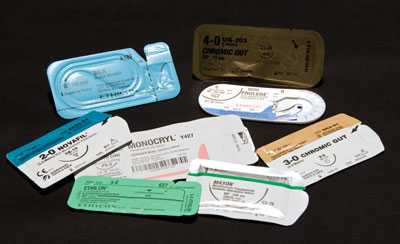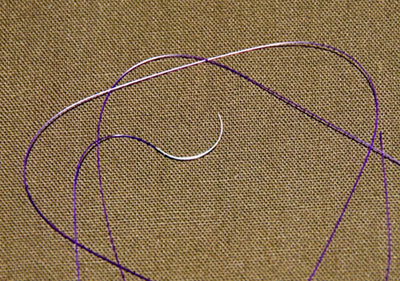Overview
- wide variety of sutures materials and brands available
- seldom one correct choice (personal preference and economics important in selection)
- need to be familiar with the important characteristics of the ones you will use
- absorbable or nonabsorbable
- if absorbable, how rapidly
- monofilament or multifilament (braided)
- amount of tissue reaction induces
- knot security and ease of handling
- unique properties of material
- absorbable or nonabsorbable

The Basics

The ideal suture should:
- support the incision while it heals
- conform to the tissues (not conform the tissues to it)
- not harbor bacteria
- cause minimal tissue reaction
- disappear when no longer needed
- be easy to handle
- tie secure knots
- be economical to use
- be easy to sterilize
No suture meets all these criteria in all situations. You have to choose the most appropriate suture material from the large variety available based on the:
-
- tissue being sutured and how it heals
- disease and patient factors
- procedure
- available suture materials
- personal preference
Suture is a foreign material that always causes some foreign body reaction that can delay wound healing. The amount of reaction varies between different materials. The suture’s effect on wound healing is minimized by:
-
- choosing least reactive material
- using smallest suture size providing adequate strength
- placing smallest amount within incision possible

